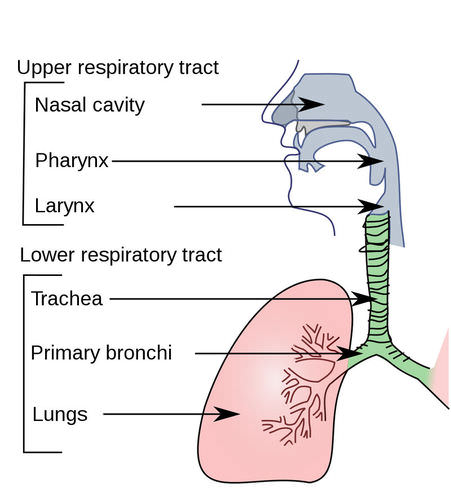
Exploring the Respiratory System: Primary Organs and Their Vital Roles
The respiratory system is a marvel of biological engineering, responsible for one of the most fundamental functions of life: breathing. This intricate system ensures the exchange of oxygen and carbon dioxide, vital for the survival of aerobic organisms, including humans. At the core of this system are several primary organs, each with a distinct role in the process of respiration. In this comprehensive article, we will delve into the workings of the respiratory system, exploring its primary organs and their indispensable contributions to our well-being.
The Key Players in the Respiratory System
1. Nose and Nasal Cavity
The respiratory process begins in the nose and nasal cavity. These structures filter, warm, and moisten incoming air, ensuring that it is clean, humidified, and at an appropriate temperature before it reaches the delicate lung tissues. The nose also contains olfactory receptors, enabling our sense of smell.
2. Pharynx
The pharynx, often referred to as the throat, is a shared passageway for both the respiratory and digestive systems. It plays a vital role in directing air to the trachea (windpipe) during inhalation and food to the esophagus during swallowing, thanks to a flap-like structure called the epiglottis.
3. Larynx (Voice Box)
The larynx, housing the vocal cords, is essential for phonation (sound production). During speech, the vocal cords vibrate as air passes over them. It also serves as a protective mechanism, closing off the airway (glottis) when we swallow to prevent food and liquid from entering the respiratory tract.
4. Trachea (Windpipe)
The trachea is a rigid tube composed of cartilage rings that connect the larynx to the bronchi. Its primary function is to transport air to and from the lungs. It is kept open by cartilage rings, ensuring a continuous airflow.
5. Bronchial Tree
The bronchial tree comprises the bronchi and bronchioles, which progressively branch out like a tree. Bronchi are airways that extend from the trachea into the lungs, further dividing into smaller bronchioles. These structures distribute air throughout the lungs and play a role in maintaining the airway’s patency.
6. Lungs
The lungs are the primary organs of the respiratory system and the sites where gas exchange occurs. They are protected by the ribcage and are housed within the pleural cavity, a fluid-filled space that reduces friction during breathing. Each lung is divided into lobes – the right lung has three lobes, while the left lung has two to accommodate space for the heart.
7. Alveoli
The alveoli are tiny, grape-like sacs within the lungs where the exchange of oxygen and carbon dioxide takes place. Oxygen from inhaled air diffuses into the bloodstream, while carbon dioxide, a waste product of metabolism, diffuses out of the blood into the alveoli to be exhaled.
8. Diaphragm and Respiratory Muscles
The diaphragm, a dome-shaped muscle at the base of the ribcage, plays a crucial role in breathing. When it contracts, it flattens and expands the chest cavity, creating a vacuum that draws air into the lungs (inhalation). When it relaxes, the chest cavity decreases in size, expelling air from the lungs (exhalation). Other respiratory muscles, such as the intercostal muscles between the ribs, assist in this process.
The Mechanics of Breathing
The respiratory system operates through a carefully orchestrated sequence of actions:
- Inhalation: The diaphragm contracts and moves downward, while the intercostal muscles expand the ribcage. This expansion increases the volume of the thoracic cavity, lowering the air pressure within the lungs. As a result, atmospheric air rushes in, filling the lungs with oxygen.
- Gas Exchange: In the alveoli, oxygen from the inhaled air crosses the thin alveolar membranes into the bloodstream. Simultaneously, carbon dioxide, a waste product from cellular metabolism, moves from the blood into the alveoli to be exhaled.
- Exhalation: The diaphragm and intercostal muscles relax, reducing the thoracic cavity’s volume. This increase in air pressure within the lungs forces the air, now rich in carbon dioxide, out of the respiratory tract and into the atmosphere.
Regulation of Respiration
The respiratory system is not solely controlled by mechanical processes. It is tightly regulated by the nervous system, particularly the brainstem, which monitors the body’s oxygen and carbon dioxide levels. When these levels deviate from the norm, the brainstem adjusts the rate and depth of breathing to restore balance.
Conclusion
The respiratory system, with its intricate network of primary organs and precise mechanics, is a testament to the body’s extraordinary complexity. It ensures a constant supply of oxygen to the bloodstream while eliminating carbon dioxide, thereby sustaining life. Understanding the roles of the nose, pharynx, larynx, trachea, bronchial tree, lungs, alveoli, and respiratory muscles in this intricate process underscores the importance of this system in our daily existence. It is through the coordinated efforts of these organs that we take in life-sustaining oxygen and expel the waste carbon dioxide, enabling us to thrive and flourish in the world.



